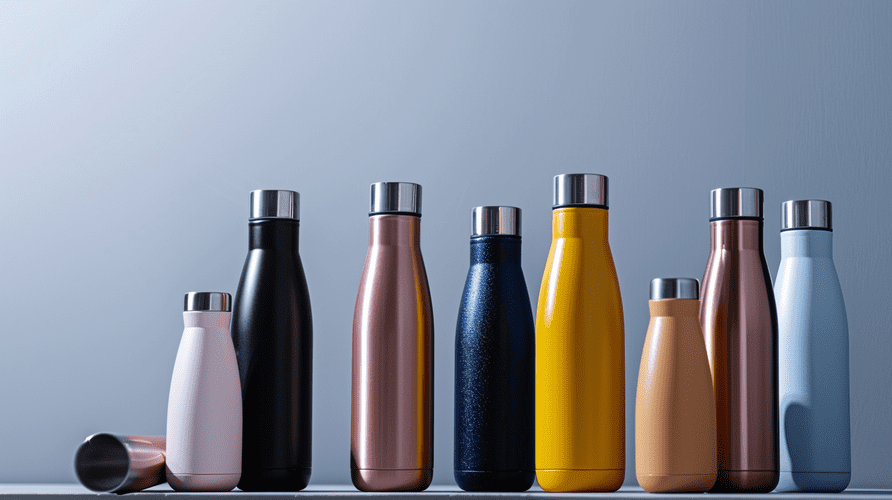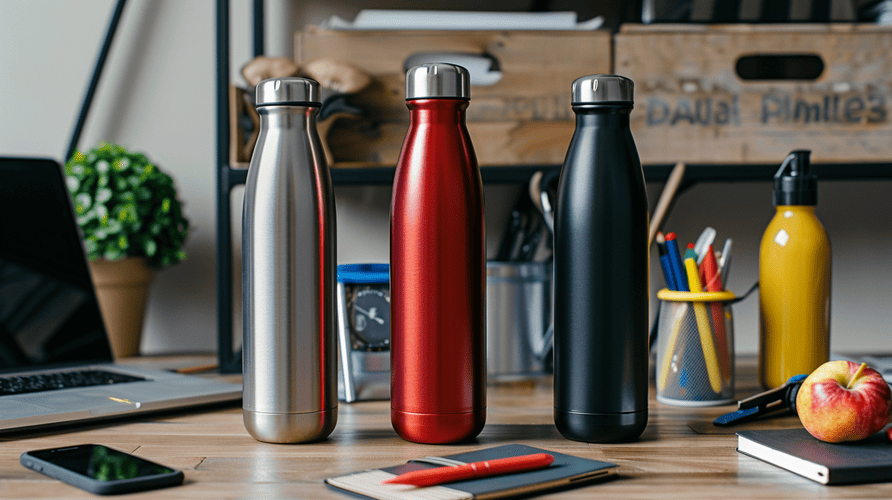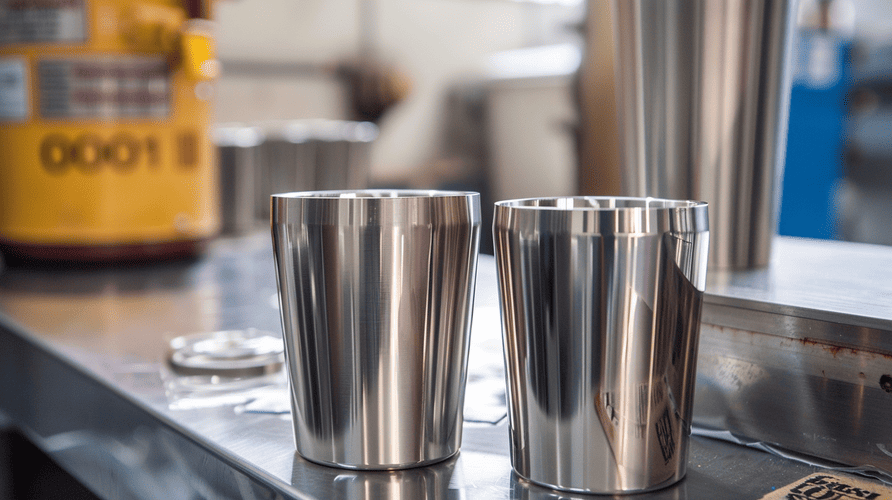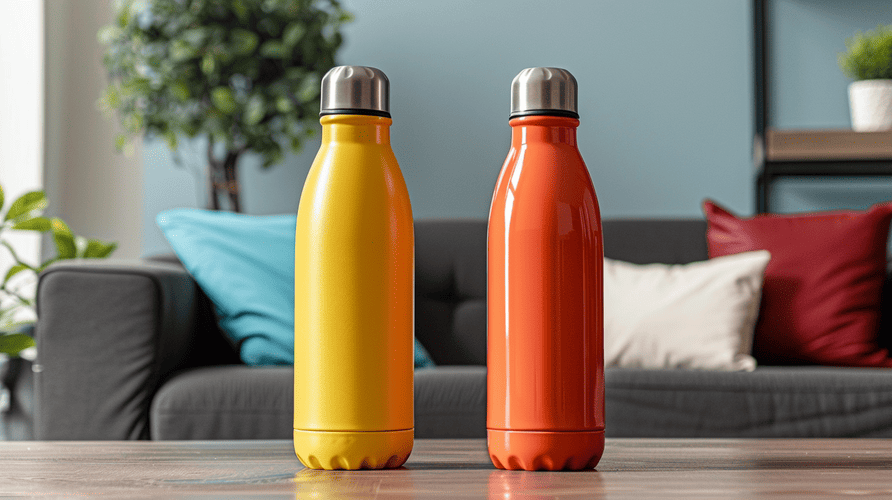Struggling to meet client demands for top-tier vacuum flasks? You're not alone. Many face challenges in balancing quality, performance, and cost. This guide unlocks the secrets to superior vacuum flask design.
The best vacuum flask design focuses on superior materials like food-grade 304 or 316 stainless steel, precision manufacturing for vacuum integrity, and a deep understanding of thermal dynamics to minimize heat transfer. This ensures optimal temperature retention, durability, and ultimately, client satisfaction.

Understanding what your B2B clients, like Mark Shenng from Canada, are looking for is crucial. Mark, a 54-year-old assertive company owner, needs high-quality stainless steel water bottles at competitive prices. He's knowledgeable about sales but not a technical expert, so clear communication about quality, certification, and logistics is key. He's had issues with inefficient supplier communication, shipment delays, and even certificate fraud. This guide will help you address these concerns directly through robust design and manufacturing practices.
What is the best vacuum flask brand?
Clients asking this are seeking quality benchmarks. They want to know what makes a flask stand out. It's not just a name, but the science and materials behind it.
The "best" brand is one consistently delivering on quality, durability, and thermal performance. For us at Icobottle, this means focusing on food-grade 304 or 316 stainless steel and meticulous manufacturing.

For procurement officers and startup bosses, especially those in America and Europe, understanding the "why" behind a good flask is essential. They are looking for a reliable partner. When Mark asks this, he's really asking if we can be the "best" for his needs. This involves more than just the physical product; it includes reliable communication, on-time delivery, and transparent certification – all pain points for Mark.
To be considered among the "best," manufacturers must prioritize several key areas in their design and production:
Material Selection: The Foundation of Quality
The choice of stainless steel is paramount.
- Food-Grade 304 (18/8) Stainless Steel: This is the industry standard, offering excellent corrosion resistance and durability for most applications. It's a cost-effective choice that balances performance and price well.
- 316 Stainless Steel: For enhanced corrosion resistance, especially against chlorides and acidic substances, 316 stainless steel is a superior option. It contains molybdenum, which significantly boosts its ability to withstand harsh environments. While more expensive, it offers longevity and is often considered medical-grade. Some manufacturers use a combination, perhaps 316 for the inner wall and 304 for the outer.
My experience in the industry, dealing with clients like Mark who are quality-sensitive, has shown that being transparent about material grades builds immense trust. We once had a potential client who was very skeptical about "Made in China" quality. By providing detailed material specification sheets and third-party lab test results for our 316 stainless steel, we didn't just win the order; we built a long-term partnership. This attention to material science is something I always stress.
Manufacturing Precision: Ensuring Consistency
The manufacturing process itself is where the design comes to life.
- Vacuum Integrity: The quality of the vacuum seal is critical. This means precise welding of the double walls and ensuring no leaks that could compromise the vacuum. Even a tiny gap can affect insulation.
- Wall Thickness and Spacing: The distance between the inner and outer walls is typically around 3mm (minimum 2mm). The space at the bottom is usually larger, around 10mm (minimum 8mm), to prevent deformation under air pressure after vacuuming.
- Uniformity: Consistent wall thickness and overall shape are signs of good manufacturing.
Benchmarking Against Top Brands
While B2B manufacturing differs from consumer retail, looking at what makes top consumer brands successful provides valuable insights. They often excel in:
- Thermal Performance: How long can they keep liquids hot or cold? This is a primary measure of quality.
- Durability: Can the flask withstand daily use, including minor drops and bumps?
- Design and Ergonomics: Is it comfortable to hold and use? Is the lid well-designed and leak-proof?
- Safety Certifications: Proof of food-grade materials and BPA-free components is essential.
For Mark, who resells rebranded bottles in Canada, these benchmarks are directly tied to his brand's reputation. If the flasks we provide don't meet these underlying quality standards, his business suffers. Therefore, our commitment to matching or exceeding these benchmarks is a commitment to his success.
What is the difference between a flask and a vacuum flask?
Clients asking this are trying to understand the core technology. It's a fundamental question that gets to the heart of your product's value proposition and why they should choose it.
A standard flask simply contains liquid. A vacuum flask, however, uses double-wall construction with a vacuum between the walls. This vacuum is key to its superior insulation, keeping drinks hot or cold for hours.

For someone like Mark, who is focused on quality but not a technical expert, explaining this difference clearly is important. He needs to understand why a vacuum flask commands a higher price and offers better performance for his customers in Canada. The "vacuum" isn't just a buzzword; it's the core technology that delivers the hot or cold retention his customers expect. Without this understanding, it's harder for him to convey the value to his own market.
Let's break down the key distinctions:
The Science of Insulation: How Vacuum Flasks Work
The defining feature of a vacuum flask is its ability to minimize heat transfer. Heat can move in three ways: conduction, convection, and radiation.
- Conduction: This is heat transfer through direct contact. In a vacuum flask1, the vacuum between the two walls largely eliminates air, which is a conductor of heat. This significantly reduces heat passing from the inner wall (holding the liquid) to the outer wall (exposed to ambient temperature).
- Convection: This is heat transfer through the movement of fluids (liquids or gases). A well-sealed lid prevents air (and thus heat) from escaping or entering via convection.
- Radiation: This is heat transfer through electromagnetic waves. Many vacuum flasks have a reflective layer (often silver or copper) on the inner wall or the outer side of the inner wall. This layer reflects radiant heat back towards the liquid (if hot) or away from the liquid (if cold).
A standard, single-walled flask offers very little resistance to these heat transfer2 methods, meaning the temperature of its contents will change rapidly.
Structural Differences
| Feature | Standard Flask | Vacuum Flask |
|---|---|---|
| Wall Structure | Single wall | Double wall (typically stainless steel) |
| Insulation | Minimal; relies on material properties | Vacuum between walls; often a reflective layer |
| Lid | Basic closure | Tight-sealing, often insulated, designed to prevent convection and leakage |
| Performance | Poor temperature retention | Excellent temperature retention for extended periods (e.g., 6-24 hours) |
| Primary Use | Containment | Maintaining temperature (hot or cold) |
When I explain this to clients, I often use an analogy. Think of a standard flask like a simple cup – it holds your drink, but the temperature changes quickly. A vacuum flask is like a high-tech thermos, engineered specifically to fight those temperature changes for hours. This helps them grasp the added value and justify the investment for their own branding and sales. For Mark, this understanding allows him to confidently market the superior thermal performance of the vacuum flasks he sources from us, which is crucial for his premium branding strategy in the Canadian market. He can then educate his customers on why they are paying a bit more for a vastly superior product.
Why does a vacuum flask keep water hot?
Understanding this question is key for innovation and quality control. It's about the physics that makes your product work and how to optimize it effectively for best results.
A vacuum flask keeps water hot because its double-walled design, with a vacuum in between, drastically reduces heat loss through conduction and convection. Reflective lining further minimizes radiative heat loss.

For a manufacturer like Icobottle, mastering these principles is everything. Every weld, every seal, the choice of stainless steel, and the design of the cap all contribute to how long that water stays hot. When Mark from Canada experiences consistent quality, it's because these scientific principles have been meticulously applied in the design and manufacturing of his stainless steel water bottles. This ensures his customers get the performance they pay for, preventing issues like rapid cooling that could damage his brand's reputation. It also allows us to troubleshoot any potential issues by understanding exactly where heat loss might be occurring.
Let's delve deeper into the mechanisms:
The Three Pillars of Heat Retention
As discussed earlier, a vacuum flask combats the three modes of heat transfer:
-
Minimizing Conduction:
- The primary way a vacuum flask3 prevents conduction is by removing most of the air molecules between its two walls. Air is a conductor of heat, so by creating a vacuum, there's very little matter to transfer heat energy from the hot liquid in the inner chamber to the cooler outer environment.
- The points where the inner and outer walls connect (usually at the neck) are minimized to reduce heat bridges.
- Manufacturer's Focus: Ensuring a high-quality, durable vacuum seal is paramount. The choice of stainless steel (e.g., 304 or 316) also plays a role, as different metals have different thermal conductivity, though the vacuum is the main barrier. The integrity of welds and the overall construction must prevent any loss of vacuum over time. We perform rigorous testing to ensure the vacuum lasts.
-
Blocking Convection:
- Convection occurs when warmer, less dense fluid (like hot air or steam from the hot water) rises and is replaced by cooler, denser fluid.
- A tightly sealed lid is crucial to prevent this. If the lid isn't airtight, hot air and steam can escape, taking heat energy with them, and cooler air can enter.
- Manufacturer's Focus: Designing and producing high-quality, leak-proof lids with effective gaskets (often made of food-grade silicone) is essential. The threading and sealing mechanism must be robust and reliable. Some lids themselves are also insulated to provide an additional barrier against convective heat loss. This is an area where small design changes can lead to noticeable performance improvements.
-
Reflecting Radiation:
- All hot objects emit infrared radiation. The hot water inside the flask radiates heat.
- To counteract this, the inner surface of the outer wall, or more commonly, the outer surface of the inner wall, is often coated with a highly reflective material like silver, copper, or aluminum. This reflective layer bounces the infrared radiation back towards the hot liquid, rather than allowing it to be absorbed by the wall and lost to the outside.
- Manufacturer's Focus: The application and quality of this reflective layer are important. It needs to be uniform and durable. Even the polished surface of stainless steel itself has some reflective properties that contribute to reducing radiation, but a dedicated layer is more effective.
I recall a specific instance where we were developing a new line of coffee mugs for a European client. They had stringent requirements for heat retention4 – coffee needed to stay above 60°C for at least 8 hours. We experimented with different vacuum levels and an enhanced copper lining. The prototypes that included a thicker, more uniformly applied copper layer showed a noticeable improvement in heat retention, specifically reducing radiative heat loss. This meticulous attention to detail is what allows us to meet the high expectations of clients like Mark, ensuring the end-user is satisfied with their hot beverage hours later.
By effectively addressing these three pathways of heat transfer, a well-designed and manufactured vacuum flask can keep water hot for many hours, making it a highly efficient insulating vessel.
Conclusion
In essence, superior vacuum flask design hinges on quality materials, precise manufacturing to maintain vacuum integrity, and a thorough understanding of thermal dynamics. This delivers lasting client satisfaction and product success.
-
Explore the advantages of vacuum flasks to understand their superior insulation and performance, which can enhance your product offerings. ↩
-
Learn about the science of heat transfer to better explain the technology behind vacuum flasks and their effectiveness. ↩
-
Explore this link to understand the science behind vacuum flasks and their efficiency in heat retention, enhancing your knowledge on the topic. ↩
-
Discover the principles of heat retention in vacuum flasks, which can help improve product design and customer satisfaction. ↩

